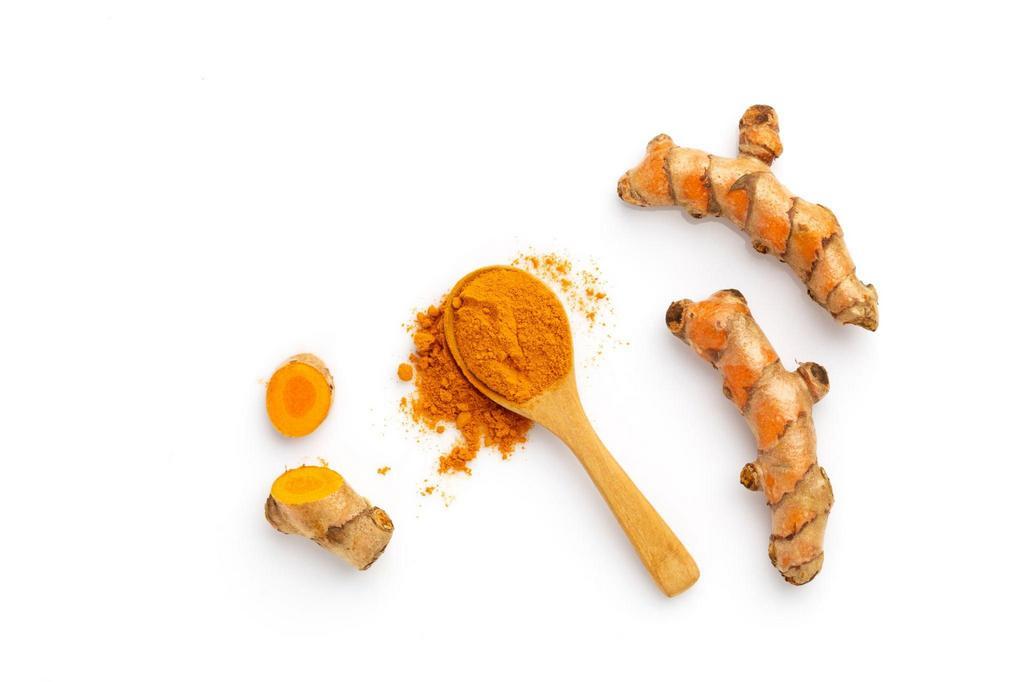Can You Eat Raw Turmeric? Does Raw Tumeric Need To Be Cooked?

Turmeric is a spice that has been used for centuries in traditional medicine and cooking. Turmeric is often used in curries, soups, and other dishes because of its bright color and strong taste.
But with the rise of health and wellness trends, people are beginning to wonder if raw turmeric is safe to eat and if it needs to be cooked. So, can you eat raw turmeric? And does raw turmeric need to be cooked?
The answer to the first question is yes; you can eat raw turmeric. In fact, raw turmeric has been used in traditional medicine for its anti-inflammatory and antioxidant properties. However, it is important to understand the potential risks associated with consuming raw turmeric as well as the benefits.
The answer to the second question is a bit more complicated. Raw turmeric can be eaten without being cooked, but cooking it makes its nutrients more bioavailable, which means that your body can use them better. Additionally, cooking turmeric can help to neutralize some of the potential irritants that can cause gastrointestinal distress when consumed raw.
In this article, we’ll talk about the risks and benefits of eating raw turmeric, as well as why it’s important to cook it first. We’ll also tell you how to add turmeric to your diet in a safe way, so you can get its possible health benefits without putting yourself in danger.
Understanding Tumeric and Their Nutritional Value
Turmeric is a spice that has been used for thousands of years in traditional medicine and cuisine. It is native to Southeast Asia and is a member of the ginger family. Curcumin, the active ingredient in turmeric, is what gives it its bright yellow-orange color.
The nutritional value of turmeric has been studied a lot, and research has shown that it has a lot of important nutrients, like vitamins C and E, potassium, iron, and fiber. Also, turmeric is a great source of manganese, a mineral that is important for healthy bones, controlling blood sugar, and healing wounds.
Curcumin, which is found in turmeric, has also been shown to improve brain function, memory, and mood. It may even help stop Alzheimer’s disease from starting.
Benefits of Eating Tumeric
Turmeric is a spice that is widely known for its health benefits. This bright yellow-orange spice has been used in traditional medicine for thousands of years to treat a variety of ailments. Not only does it give food a unique flavor, but it also has chemicals in it that can help prevent chronic diseases and improve health in general.
One of the most significant benefits of eating turmeric is its anti-inflammatory properties. Chronic inflammation has been linked to a wide range of health problems, including heart disease, cancer, and Alzheimer’s disease.
Curcumin, which is the active ingredient in turmeric, has been shown to reduce inflammation and may be as good as some anti-inflammatory drugs. Regular use of turmeric can help reduce inflammation all over the body, which can improve overall health and lower the risk of getting a long-term illness.
Another benefit of eating turmeric is its potential to improve brain function. Studies have shown that curcumin can make the brain make more of a protein called brain-derived neurotrophic factor (BDNF), which is important for brain health. Low levels of BDNF have been linked to depression and Alzheimer’s disease. By increasing BDNF levels, turmeric may help improve memory, cognitive function, and mood.
Turmeric is also a powerful antioxidant, which means it can help protect the body from oxidative stress. Free radicals are what cause oxidative stress. Free radicals can damage cells and play a role in the development of long-term diseases like cancer and heart disease. Curcumin has been shown to fight free radicals and protect against oxidative stress. This makes turmeric a great addition to any diet.
Can You Eat Raw Tumeric?
The bright orange-yellow spice turmeric has been used in traditional medicine and cooking for a long time. It is commonly known for its anti-inflammatory properties and as a digestive aid. But can you eat raw turmeric? The answer is yes, you can, but with a few things to keep in mind.
Firstly, raw turmeric has a very strong flavor and a bitter taste. Therefore, consuming it in large quantities might not be the most palatable experience. To add it to your diet, you should start with small amounts and slowly increase them so that your taste buds can get used to it.
Also, raw turmeric is harder to digest than cooked turmeric, which can cause digestive problems for some people. So, to make it easier to digest, it’s best to grate it, blend it into a smoothie, or mix it with other foods.
Second, raw turmeric has more of the active ingredient curcumin, which gives it its anti-inflammatory properties, than cooked turmeric does. This means that consuming raw turmeric may provide more health benefits.
But it’s important to remember that the body doesn’t easily absorb curcumin. Taking it with black pepper or fat can make it more bioavailable.
Lastly, when you eat raw turmeric, it’s important to make sure it’s clean and fresh. Turmeric roots can be contaminated with bacteria or other pathogens, so it’s important to wash them thoroughly and store them properly to avoid foodborne illness.
Are Raw Tumeric Poisonous?
Raw turmeric is not poisonous, but if you eat a lot of it, it can make you feel bad. Turmeric is a spice that has been used for thousands of years in cooking and traditional medicine, and is generally considered safe when consumed in moderation. However, it is important to understand the potential risks associated with consuming raw turmeric.
However, there are concerns about the safety of consuming raw turmeric. Turmeric is generally safe to eat, but there may be some risks if you eat it raw.
Raw turmeric contains a compound called oxalate, which can bind with calcium in the body and form kidney stones. Small amounts of oxalate are usually safe, but if you eat a lot of raw turmeric on a regular basis, especially if you have a history of getting kidney stones, you may be more likely to get them. This is why it is generally recommended to cook turmeric before consuming it.
Health Risk and Side Effects of Eating Raw Tumeric
Turmeric is usually safe to eat, but there are some health risks and possible side effects to think about if you eat it raw.
One of the main risks of eating raw turmeric is that it could be contaminated with bacteria. Salmonella or E. coli, which are both harmful bacteria, can get into turmeric roots and make people sick. To reduce the risk of contamination, it’s important to wash the turmeric root thoroughly and peel it before consumption.
Another potential health risk of consuming raw turmeric is its high oxalate content. Oxalates are naturally occurring chemicals that can be found in a lot of foods, like turmeric. Oxalates can form crystals that can lead to kidney stones. People who have had kidney stones or kidney disease in the past shouldn’t eat too much turmeric and shouldn’t eat it raw.
In addition to these health risks, eating a lot of raw turmeric can make you feel sick, have diarrhea, and have trouble digesting. This is because raw turmeric is harder to digest than cooked turmeric, and some people may have a sensitivity to its strong taste or bitter flavor. To avoid these side effects, it’s best to start with small amounts of raw turmeric and slowly increase the amount over time.
How to Safely Consume Raw Tumeric
Raw turmeric is a spice that has been used in cooking and traditional medicine for thousands of years. Even though there are some possible risks to eating raw turmeric, it is safe to eat as long as certain precautions are taken. Here are some tips on how to safely consume raw turmeric:
- Use small amounts: Consuming large amounts of raw turmeric can increase the risk of developing kidney stones due to the presence of oxalate. To minimize the risk, it is recommended to consume small amounts of raw turmeric at a time.
- Peel and grate: Raw turmeric can be difficult to digest if consumed in its whole form. To make it easier to digest, peel and grate the turmeric before consuming it. This will also help release the active compounds in the turmeric, making them more bioavailable.
- Add it to smoothies or juices: Raw turmeric can be added to smoothies or juices to make it more palatable. Mixing it with other ingredients can also help dilute the oxalate content, reducing the risk of developing kidney stones.
- Buy from a reputable source: To reduce the risk of contamination with harmful bacteria or fungi, it is important to buy raw turmeric from a reputable source. Look for organic turmeric that has been grown without the use of pesticides or other chemicals.
- Store it properly: Raw turmeric should be stored in a cool, dry place away from direct sunlight. It can be stored in the refrigerator for up to two weeks. Before consuming, make sure to thoroughly wash the turmeric to remove any dirt or debris.
Raw Tumeric vs. Cooked Tumeric: Which One is Better?

Turmeric is a spice that can be used in many different ways and dishes. But is raw turmeric better than cooked turmeric, or vice versa? The answer is that it depends on the desired outcome and intended use.
Raw turmeric has more of the active ingredient curcumin, which is what gives it its anti-inflammatory properties. This means that consuming raw turmeric may provide more health benefits than cooking it. Curcumin, on the other hand, isn’t easily absorbed by the body. Taking it with black pepper or fat can make it more bioavailable. So, cooking turmeric with black pepper or adding it to a dish with a fat source, like coconut milk, may make its health benefits even better.
Cooking turmeric can also make it easier to digest and improve its flavor. Raw turmeric has a strong, bitter taste that may not be palatable to everyone. Cooking it can help to mellow out the flavor and make it more enjoyable to consume. Additionally, cooking turmeric can help to break down its tough fibers and make it more digestible.
How Many Raw Tumeric Should You Eat in a Day?
People aren’t sure how much raw turmeric they should eat every day to get these benefits. While there is no one-size-fits-all answer to this question, there are some general guidelines that can be followed.
The active compound in turmeric that is responsible for its health benefits is called curcumin. In order to get the full benefits of curcumin, it is recommended to consume 500 to 2,000 milligrams of it per day. This equates to approximately 1 to 3 teaspoons of ground turmeric per day. It is important to note that the amount of curcumin in turmeric can vary depending on factors such as the source and processing of the turmeric.
If you are consuming raw turmeric, it is important to keep in mind that raw turmeric contains oxalate, which can increase the risk of developing kidney stones if consumed in large amounts. Most experts say that you shouldn’t take in more than 500 milligrams of oxalate per day, which is about 1 teaspoon of raw turmeric. It’s important to know that cooking turmeric can lower the amount of oxalate in it, making it safer to eat in larger quantities.
Lastly, it is important to consider any potential interactions with medications or medical conditions. Turmeric can interact with some medications, including blood thinners and diabetes medications, and should be avoided or used with caution in people with certain medical conditions such as gallbladder disease or gastroesophageal reflux disease (GERD).
How to Incorporate Raw Tumeric into Your Diet
Turmeric is a spice that has been used for centuries in traditional medicine and cooking. Adding raw turmeric to your diet is a great way to get the health benefits of this spice. Here are some easy ways to add raw turmeric to your meals:
- Turmeric shots: Mix freshly grated or chopped turmeric with lemon juice, black pepper, and water to create a turmeric shot. This can be a quick and easy way to get a concentrated dose of turmeric’s anti-inflammatory properties.
- Smoothies: Add a pinch of freshly grated turmeric to your smoothie for an added boost of flavor and health benefits. Turmeric pairs well with fruits like fresh mango, fresh pineapple, and banana.
- Golden milk: Golden milk is a traditional Ayurvedic beverage made with turmeric and milk. To make it, simmer freshly grated turmeric, milk, black pepper, and honey together. This warm and comforting drink can be enjoyed any time of day.
- Turmeric rice: Add freshly grated turmeric to your rice when cooking for a delicious and colorful side dish. Turmeric also pairs well with other spices like cumin and coriander.
- Salad dressing: Mix freshly grated turmeric with olive oil, lemon juice, honey, and Dijon mustard to create a flavorful salad dressing. This dressing can be used on greens, roasted vegetables, or grain bowls.
Adding raw turmeric to your diet is an easy and tasty way to improve your health. Whether it’s in a shot, smoothie, or meal, adding turmeric to your meals is a great way to experience its health benefits.






